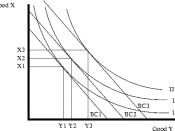?A marketing channel has been defined as "a system of relationships existing among businesses that participate in the process of buying and selling products and services".
Channel intermediaries are those organizations that facilitate the distribution of goods to the ultimate customer. The complex roles of intermediaries may include taking physical ownership of products, collecting payment, and offering after-sales service. Marketing channel management refers to the choice and control of these intermediaries.
As more and more tasks are passed onto intermediaries, the producing company starts to lose control and power over its products and how they are sold. A key part of channel management therefore involves the recognition that networks of intermediaries represent social systems as well as economic ones.
The value chain of an organization describes the activities involved in the manufacture, marketing and delivery of a product or service by the firm.
In order to decide whether a firm should undertake its own distribution direct to consumers or whether it would be more efficient and effective to use intermediaries, it is necessary to understand the functions of these intermediaries. Consumers often want only a limited quantity of a wide range of goods, goods that are conveniently made available under one roof (i.e. in a retail supermarket). Intermediaries can help overcome this discrepancy of assortment by reducing dramatically the number of contacts required between suppliers and the end customers (see Figure 14.3, p342).
In many cases, intermediaries can have superior knowledge of a target market compared to manufacturers. Retailers can therefore add value to the producer?s goods by tailoring their offerings more closely to the specific requirements of consumers.
Intermediaries help to overcome two types of gap: ÷ A location gap occurs due to the geographic separation of producers and the consumers of their goods.


